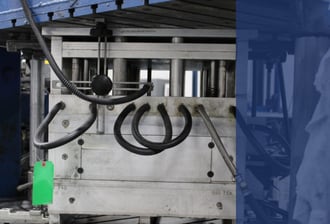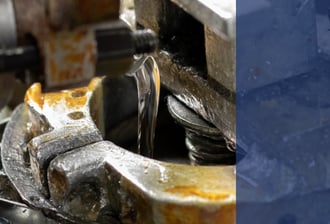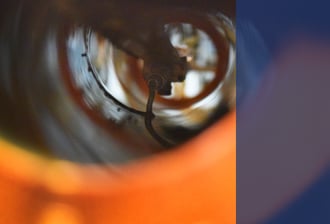Tooling Requirements for Polyurethanes: What You Need to Know
When designing with thermoset polyurethanes, it's essential to understand the tooling requirements that come with this versatile material. Unlike thermoplastics, which are simply melted and reshaped, thermosets are formed through a chemical reaction, making them ideal for specialized manufacturing processes.
At MPC, we focus on cast molding with advanced thermoset polyurethanes, helping bring your complex designs to life.
Key Processes for Polyurethane Molding
- Cast Molding: Adaptable for simple or complex designs
- Reaction Injection Molding (RIM): Best for intricate geometries with lightweight features
- Centrifugal Molding: Ideal for products with hollow or intricate internal features
Ready to start your custom molding project? Fill out our design tool today!
Reaction Injection Molding
 RIM introduces thermoset materials into a mold under pressure and heat. Because of this, special machinery such as presses and temperature controls are required to optimize the process for molding. For instance, certain materials may require high heat to be more chemically reactive, whereas others may require heat to be driven out of the molding process. RIM allows for intricate geometries with variable wall thicknesses and lighter weight features. As a result of these process parameters, RIM molds are most often manufactured from strong and reliable metals.
RIM introduces thermoset materials into a mold under pressure and heat. Because of this, special machinery such as presses and temperature controls are required to optimize the process for molding. For instance, certain materials may require high heat to be more chemically reactive, whereas others may require heat to be driven out of the molding process. RIM allows for intricate geometries with variable wall thicknesses and lighter weight features. As a result of these process parameters, RIM molds are most often manufactured from strong and reliable metals.
Cast Molding
 Cast molding can be as simple as pouring the material into an open mold, or as complex as a fully-automated process. Typically, tooling is determined by a product's overall design and volume requirements. For instance, the more complex the part features, the more complex the tooling will be. Since thermoset polyurethanes can take on many shapes or forms, cast molding can employ several different molding techniques, such as open molds, close molds, and compression molds to name a few. As a result, both soft and hard tooling can be utilized to accommodate the different stages of development.
Cast molding can be as simple as pouring the material into an open mold, or as complex as a fully-automated process. Typically, tooling is determined by a product's overall design and volume requirements. For instance, the more complex the part features, the more complex the tooling will be. Since thermoset polyurethanes can take on many shapes or forms, cast molding can employ several different molding techniques, such as open molds, close molds, and compression molds to name a few. As a result, both soft and hard tooling can be utilized to accommodate the different stages of development.
For more information on cast molding with polyurethanes, click here to download our material data sheets.
Centrifugal Molding
 Centrifugal molding is a type of cast molding, sometimes known as spin casting. Unlike other molding methods, centrifugal molding involves the introduction of a material into a mold cavity using centrifugal force. As the mold spins, the centrifugal force pushes the material towards the outside of the mold, pushing any air bubbles out. Because of this, centrifugal molding is often ideal for products that are often hollow or consist of intricate, internal features. Tooling for centrifugal molding can be made from soft or hard materials, however, this is contingent on the overall design and volume requirements.
Centrifugal molding is a type of cast molding, sometimes known as spin casting. Unlike other molding methods, centrifugal molding involves the introduction of a material into a mold cavity using centrifugal force. As the mold spins, the centrifugal force pushes the material towards the outside of the mold, pushing any air bubbles out. Because of this, centrifugal molding is often ideal for products that are often hollow or consist of intricate, internal features. Tooling for centrifugal molding can be made from soft or hard materials, however, this is contingent on the overall design and volume requirements.
If you are seeking manufacturing assistance for your next product design, contact us, here, or click the banner below to answer 5 design questions to start your custom polyurethane product today!




